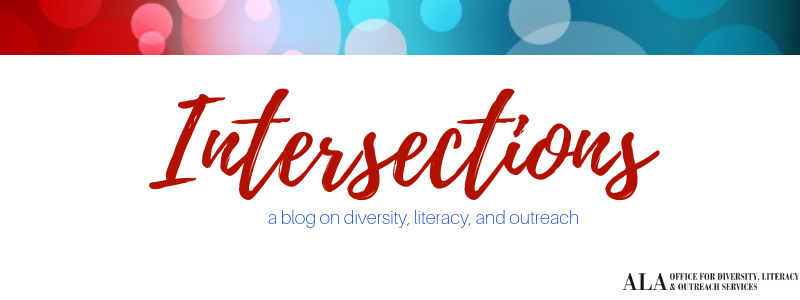
By: Raymond Pun, Instruction/Research Librarian, Alder Graduate School of Education, California
For the past year and a half, I have been working on my dissertation research focusing on the impact of digital exclusion of the lived experiences of people of color, and how they use their local public library’s technology resources in California.
Prior to COVID-19, I interviewed individuals experiencing the digital divide phenomenon and were also avid public library users. I learned that their public library supported their needs on a daily basis. Whether they were receiving assistance on searching for jobs online, completing school assignments in a learning management site, writing fictional stories, attending a technology training workshop, or applying for subsidized housing online, participants recounted their stories and purposes in using the public library’s technology resources.
However, I also discovered that there were limitations to their access. Two types of constraints crystallized: circumstantial and institutional. Circumstantially, some participants mentioned that they lived far away from their local libraries, or that they had day jobs or duties  and could only visit the library during the evenings which limited their own access. Their access was restricted by time and by their own personal situations. Institutionally, participants felt that the public terminals’ time limitation policy, hours of service, or the lack of a diverse workforce (i.e. library staff who can speak their native languages such as Hmong or Spanish) were constraining their access in fully using the technology resources. Although the factor of time did play a role in determining access, these institutional components were under the library’s inherent structure and domain.
and could only visit the library during the evenings which limited their own access. Their access was restricted by time and by their own personal situations. Institutionally, participants felt that the public terminals’ time limitation policy, hours of service, or the lack of a diverse workforce (i.e. library staff who can speak their native languages such as Hmong or Spanish) were constraining their access in fully using the technology resources. Although the factor of time did play a role in determining access, these institutional components were under the library’s inherent structure and domain.
The main difference between these two types of constraints is that one can be changed and the other cannot be changed. Library policies focusing hours of service, Internet-access, or recruitment efforts can be reviewed and improved to meet the users’ needs. More funding is needed to expand such efforts, but it is important to recognize how underrepresented users view the library’s services, and how libraries can re-center their services and policies to meet such growing needs. Circumstantially, there are constraints that cannot be changed: users’ distance and location to the library, and external commitments such as school/life can determine their levels of access.
Since the emergence of COVID-19, many institutions have been temporarily closed. These changes invited further constraints to accessing important technology resources quite inevitably. However, some libraries have kept their Wi-Fi on which enables their users to access the Internet through their own devices in the library’s parking lot or nearby surroundings.
Even after wrapping up my study, I followed up with select participants to speak about their experiences during COVID-19 and how their public libraries’ closures affected them. Leslie and Zhao (pseudonyms) agreed to speak with me on the phone. Leslie described their experience clearly, “I am not happy at all because [the library] was very close for me to get to within walking distance and it’s a challenging, I can’t really print what I need. You know my phone is small and like it messes in my eyes, I can’t keep staring at the phone for long periods of time.”
Zhao shared their angst about the situation, “I feel like I am in a zoo, trapped at home […] I cannot apply for jobs at the moment.” Zhao resorted to going to the library’s parking lot with their children to access the Internet so the children could do their schoolwork. After a week, Zhao had to stop going because many people were gathering in the parking lot and Zhao felt unsafe. They opted to subscribe to the Internet temporarily at home and had to cut back on other personal needs.
Under COVID-19, we are seeing a different type of constraint emerging: a universal one. Everyone is impacted by such restrictions due to health and safety concerns and COVID-19 has deeply exposed digital inequity in all forms. Libraries, schools, and universities need to think about these users, the most vulnerable ones, and how the “flipping-to-digital” narrative without clear infrastructure or guidance can be very problematic for their communities. We are seeing legislative bills cropping up, such as the “Emergency Educational Connections Act of 2020,” to appeal for funds in support of schools and to “bridge the digital divide” in learning.
However, more advocacy and legislative work will be needed to ensure that libraries are also included in such packages to support library users such as Leslie, Zhao, and many others.
Once this pandemic is managed, I am hoping to speak with Leslie, Zhao, and other participants again. Their perspectives shape our understanding of stories that have been largely ignored by mainstream discussions and research. By illuminating the lived experiences of those who are underrepresented and underserved, we can learn how to truly tackle the issue of digital inequity for all.
The author would like to thank participants for sharing their narratives and experiences, particularly during the pandemic time. In addition, the author would like to acknowledge the support from his dissertation committee: Dr. James Mullooly, Dr. Annie White, Dr. Bob Bleicher and Dr. Maria McCauley.
